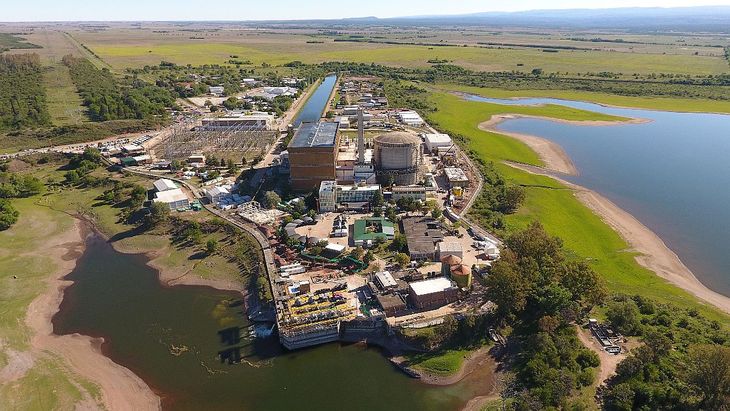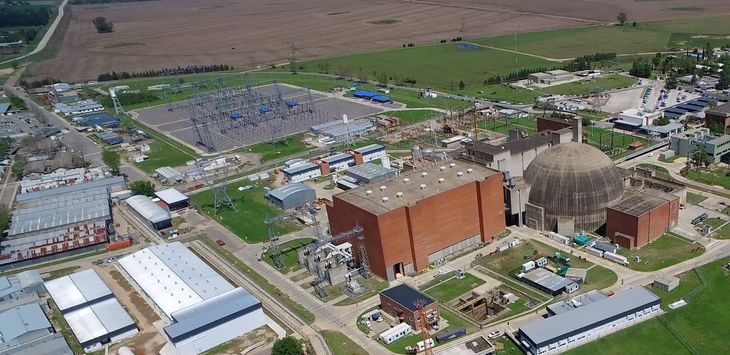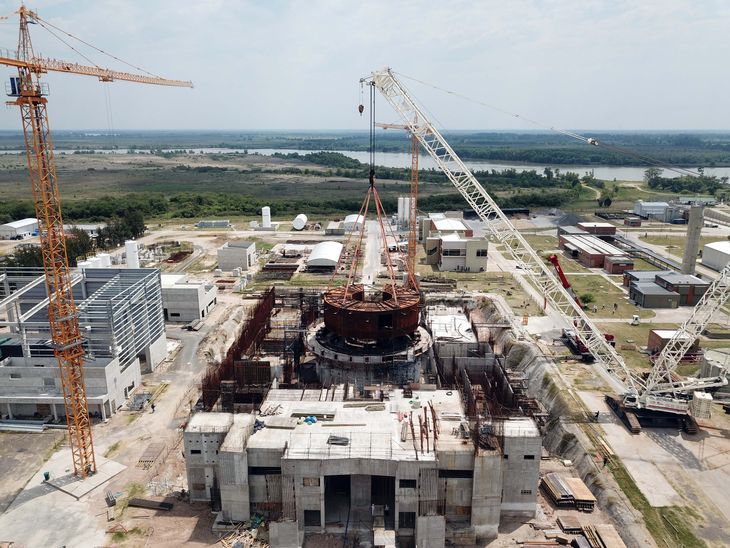Nuclear Energy: what is the current state of development in the country
To know the beginnings of Argentine nuclear history we must go back to 1949, when under the presidency of Juan Domingo Peron Austrian scientist was hired Ronald Richter to develop a nuclear fusion reactorin the area from Bariloche to Huemul Island. However, after three years of initiation, Richer’s project generated many doubts and the Atomic Energy Commission (CNEA, created in 1950) sent a delegation to observe the progress, which culminated in the suspension of development due to lack of progress.
A few years later, on January 17, 1958, the first milestone was achieved: the inauguration of the RA-1 experimental reactorthe first in the region. Built in the province of Buenos Aires, this allowed other larger undertakings to be carried out, such as the manufacture and export of research and radioisotope production reactors and the development of fuel elements. Likewise, the path was paved towards the generation nuclear power of the country through nuclear power plants.
The Ministry of Energy of the Nation defines the nuclear power as that “that is released as a consequence of the reaction that occurs when heavy atomic nuclei are divided. This is also called Nuclear Fission. As a result of this process, large amounts of heat are generated that are used to produce pressurized steam, which “which allows obtaining mechanical energy to operate electrical energy generators.” It has the advantage of producing a “low environmental impact.”
Currently, the country has three nuclear power plants that are part of its nuclearelectricity program: Atucha I, Embalse and Atucha II. Between the three of them, they contribute approximately 6.5% of electrical energydistributed throughout the country.
Atucha I
The Atucha I Nuclear Power Plant began construction in June 1968 and became the first nuclear power plant in Latin America. It was connected to the National Electric System on March 19, 1974 and, after this, It began commercial production on June 24 of that same year.
The first Latin American nuclear power plant is located on the right bank of the Paraná de las Palmas River, 100 km from the city of Buenos Aires in the town of Lima, Partido de Zárate. Currently, Atucha I has a gross electrical power of 362 electrical megawatts.
Atucha I nuclear energy.jpg
The plant is cooled and moderated with heavy water (D20), and belongs to the PHWR type of reactor – pressurized heavy water reactor -.
Despite being the oldest plant in the country, all its security systems were updated and comply with local and international requirements. In addition, Nucleoeléctrica is currently executing the Atucha I Life Extension Project, which is will extend for 30 months, and whose completion will allow the operation of the plant to be extended by twenty additional years at full power.
Reservoir
After the creation of Atucha came the inauguration of the Embalse Nuclear Power Plant. It began construction in 1974 and began its commercial operation on January 20, 1984. The plant is located on the southern coast of the Río Tercero reservoir in the province of Córdoba. Embalse has a total power of 656 MWe.
Embalse Córdoba Nuclear Power Plant.jpg

Embalse has a total power of 656 MWe.
The nuclear power plant completed its first operating cycle on December 31, 2015. After completing the Life Extension project, Embalse successfully reached critical status of its reactor on January 4, 2019which began the second operational cycle, which will last about 30 years.
Atucha II
The last nuclear power plant built in the country is Atucha II. Although the project began in the 1980s, construction was paralyzed until 2006, which meant that it had just begun. commercial production on June 27, 2014.
Atucha II.jpg

The plant has a power of 745 Mwe.
Located in the same complex as its sister, Atucha I, on the Paraná River in the town of Lima, Zárate district, 100 kilometers from the City of Buenos Aires, the plant has a power of 745 Mwe, being the most powerful to date.
From the point of view of design and construction, it is a modern Central that has updated security systems; with the concept of defense in depth with successive barriers; containment sphere; physical separation between security systems, and an in-service surveillance program.
CAREM
He CAREM project was at the center of the nuclear energy focus during 2024 by different debates about its progress. Nowadays, it is common to use a model of nuclear power plants that is quite far from what we know through movies. CAREM is a project to build a Small Modular Reactor (SMRs) that are central nuclear power of small dimensions and with less electrical power and they have a simpler development and better forms of security, while their construction requires less time, lower costs and investments.
el carem.jpg

all over the world There are nearly a hundred designs of SMRs and among them is the CAREM (Argentine Central of Modular Elements), which is a low-power nuclear power plant project, developed with a state-of-the-art design. The CAREM concept dates back to 1984, and it was in 2005 that the Argentine development was chosen among more than ten projects worldwide by a commission of experts convened by the US Department of Energy.
During this year, in March 2024, The National Atomic Energy Commission (CNEA) paralyzed the CAREM works due to lack of economic resources. Later, in September 2024, the CNEA reported that the CAREM works continue, but with a budget cut of approximately 50%in what is one of the most advanced nuclear energy projects in the country.
The details of the Argentine Nuclear Plan
President Javier Milei announced the launch of the Argentine Nuclear Plan that contemplates, among other initiatives, the construction of a reactor in Atucha and the development of uranium reserves. This is in line with the Government’s objective of turning the country into a Artificial Intelligence (AI) Hub.
“We are contemporaries of a true technological revolution“, announced the president in reference to AI. “It opens a new frontier for this manifest destiny that we share as a species,” he said. To achieve this, nuclear energy can play a fundamental role.
During the announcement, later broadcast on social network X, the President was accompanied by the head of the Council of Advisors, Demian Reideland to the Director General of the International Atomic Energy Agency (IAEA), Rafael Grossi.
Embed – https://publish.twitter.com/oembed?url=https://x.com/OPRArgentina/status/18702518803805434 51?ref_src=twsrc%5Etfw%7Ctwcamp%5Etweetembed%7Ctwterm%5E1870251880380543451%7Ctwgr%5Ed6c3a5 bafdb88de6e888b8117c242197bea7a2e5%7Ctwcon%5Es1_&ref_url=https%3A%2F%2Fwww.ambito.com%2Fpolitica%2Fjavier-milei-announced-the-argentine-nuclear-plan-n6095479&partner=&hide_thread=false
President Javier Milei announces the Argentine Nuclear Plan, together with the Head of the Council of Advisors, Demian Reidel, and the Director General of the International Atomic Energy Agency (IAEA), Rafael Grossi. pic.twitter.com/oIrruEO2sz
— Office of the President (@OPRArgentina) December 20, 2024
Reidel was designated as the responsible for the Argentine Nuclear Plan and he was the official who delved most into the details of the public initiative. According to the person responsible for the nuclear project, it is a “ambitious plan that marks the rebirth of nuclear energy as the cornerstone of Argentina’s energy future and global, in a global context in which Artificial Intelligence and technological advances demand more and more energy.”
Besides, Reidel assured that the national government will create the Argentine Nuclear Council, which will be chaired by the same and made up of the Chief of Staff, Guillermo Francos; the defense minister, Luis Petri; and the president of the National Atomic Energy Commission, Germán Guido Lavalle.
The new Argentine plan has the support of the International Atomic Energy Agency (IAEA) and contemplates two stages. In the first one, a small modular reactor (SMR) on the grounds of the Atucha Nuclear Power Plant. According to the official statement, this “will facilitate access to energy throughout the country and will considerably reduce power outages.” Then, during the second stage, they will develop uranium reserves. This, they assure, will allow domestic demand to be met and will even allow the export of fuel elements with high added value.
Source: Ambito
David William is a talented author who has made a name for himself in the world of writing. He is a professional author who writes on a wide range of topics, from general interest to opinion news. David is currently working as a writer at 24 hours worlds where he brings his unique perspective and in-depth research to his articles, making them both informative and engaging.




